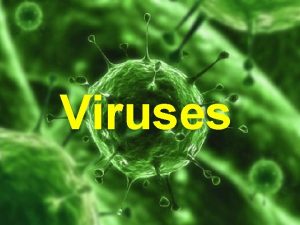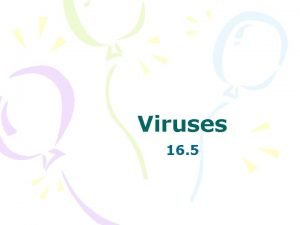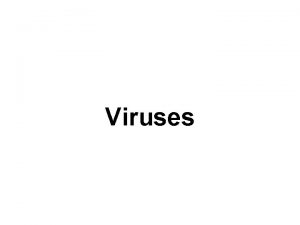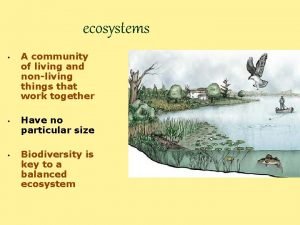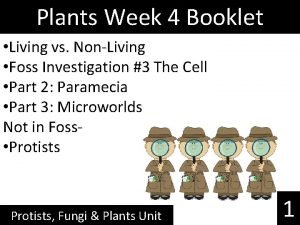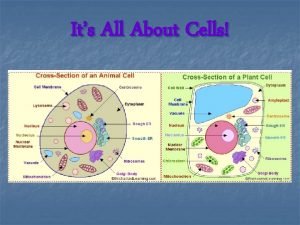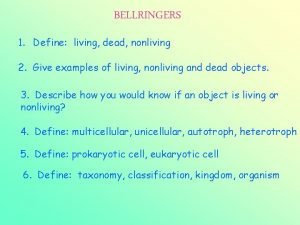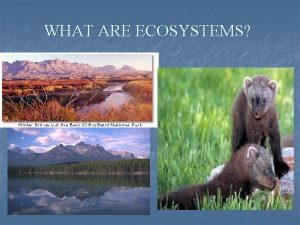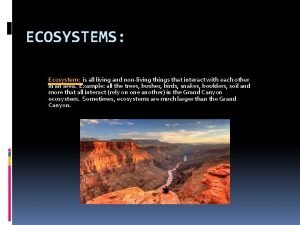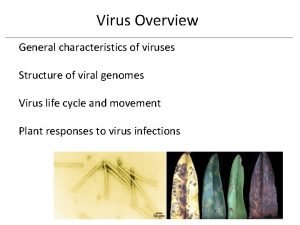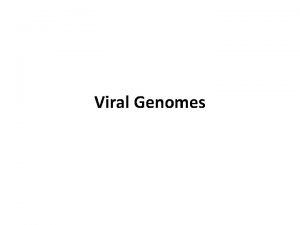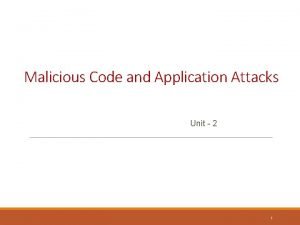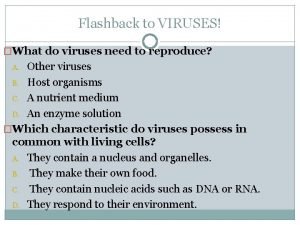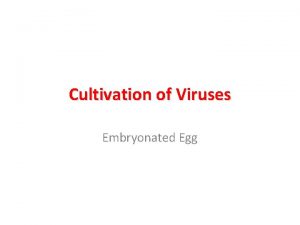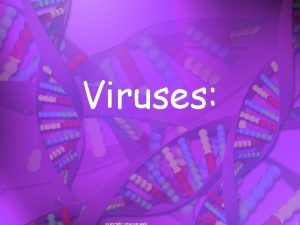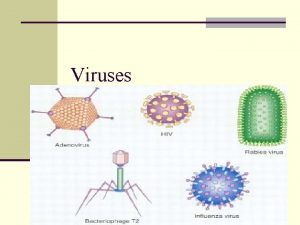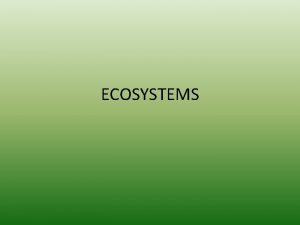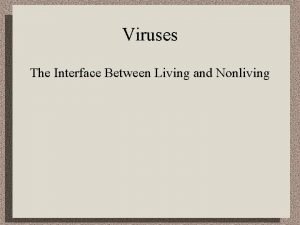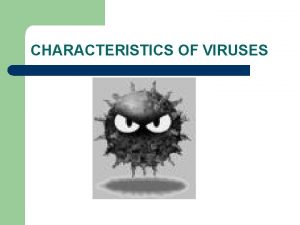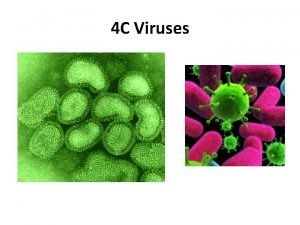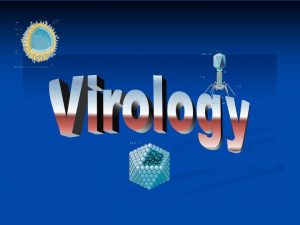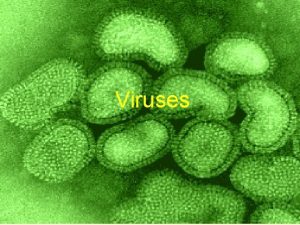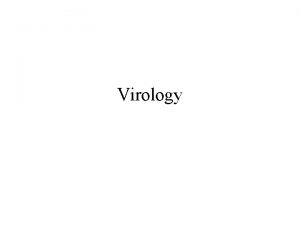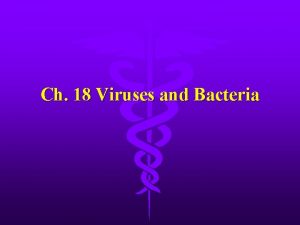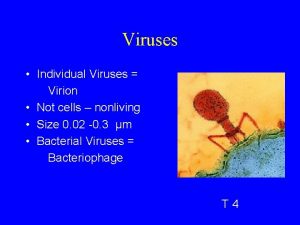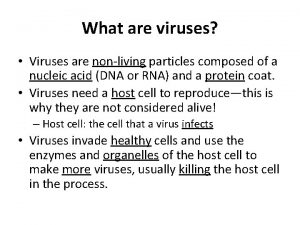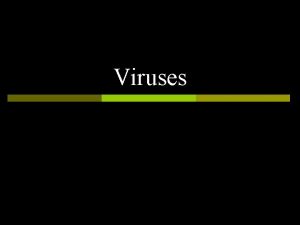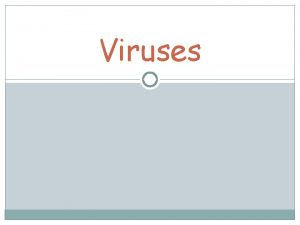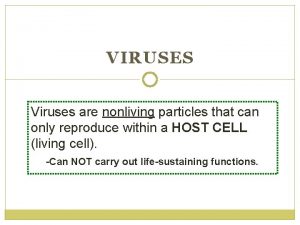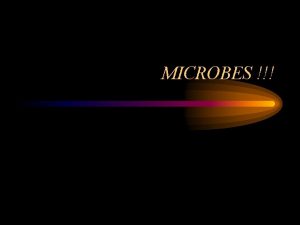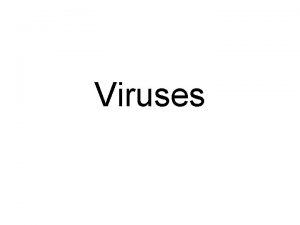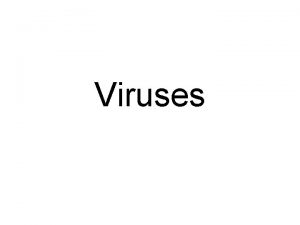viruses Living Nonliving Contain a single type of





























- Slides: 29

viruses

• Living • Nonliving

• Contain a single type of nucleic acid (DNA or RNA), protein coat, sometimes an envelope. • Are obligatory intracellular parasites. Multiply by using host cell’s synthesizing machinery to cause the production of specialized elements that can transfer the nucleic acid to other cells.

• Multiply inside living cells by using the synthesizing machinery of the cell. • Why does this make targeting viruses difficult?

Host Range • The spectrum of host cells in which a virus can multiply. • Mot viruses infect only specific types of cells in one host species. • The host is determined by the specific attachment site on the host cell’s surface and the availability of host cellular factors.

Virus Size Figure 13. 1

Taxonomy of viruses • Currently based on type of nucleic acid, strategy for replication and morphology. • Virus family names end in –viridae; genus names end in –virus • A viral species is a group of viruses sharing the same genetic information and ecological niche

Viral Taxonomy • Herpesviridae • Herpesvirus • Human herpes virus 1, HHV 2, HHV 3 • Flue H 1 N 1 • Retroviridae • Lentivirus • Human Immunodeficiency Virus 1, HIV 2

Isolation, growth and identification • Must be grown on living cells. • Easiest to grow are bacteriophage, because bacteria are easy to grow.

Growth results. • Plaques for bacteriophage. • Cytopathic effects on cell culture.

Growing Viruses • Viruses must be grown in living cells. – Bacteriophages form plaques on a lawn of bacteria. Figure 13. 6

Growing Viruses • Animal viruses may be grown in living animals or in embryonated eggs. Figure 13. 7

Growing Viruses • Animal and plants viruses may be grown in cell culture. – Continuous cell lines may be maintained indefinitely. Figure 13. 8

Identification. • Serological tests (Antibodies) • RFLP and PCR • (Discussion)

Typical viral infection • • • Attachment Penetration Biosynthesis Maturation Release • Burst size and burst time

Bacterial cell wall Bacterial chromosome Capsid DNA Capsid Sheath 1 Attachment: Phage attaches to host cell. Tail fiber Base plate Pin Cell wall Tail Plasma membrane 2 Penetration: Phage pnetrates host cell and injects its DNA. Sheath contracted Tail core 3 Merozoites released into bloodsteam from liver may infect new red blood cells Figure 13. 10. 1

Tail DNA 4 Maturation: Viral components are assembled into virions. Capsid 5 Release: Host cell lyses and new virions are released. Tail fibers Figure 13. 10. 2

One-step Growth Curve Figure 13. 11

Lysogeny or Lytic?

The Lysogenic Cycle Figure 13. 12

Animal virus infection • • Attachment Penetration (endocytosis) Uncoating Biosynthesis

Attachment, Penetration, and Uncoating Figure 13. 14

Release of an enveloped virus by budding Figure 13. 20

Multiplication of DNA Virus Papovavirus 1 Virion attaches to host cell 7 Virions are released Host cell DNA Capsid 2 DNA Cytoplasm 6 Virions mature Virion penetrates cell and its DNA is uncoated Capsid proteins m. RNA 5 Late translation; capsid proteins are synthesized 4 Late transcription; DNA is replicated 3 Early transcription and translation; enzymes are synthesized Figure 13. 15

Viruses and Cancer. • Viruses incorporated in to the host genome can cause mistakes and errors resulting in unchecked growth of the cell. • It this accidental or are these sites targeted?

• Latent Viral Infections – Virus remains in asymptomatic host cell for long periods • Cold sores, shingles • Persistent Viral Infections – Disease processes occurs over a long period, generally fatal • Subacute sclerosing panencephalitis (measles virus)

Prions • Infectious proteins • Inherited and transmissible by ingestion, transplant, & surgical instruments • Spongiform encephalopathies: Sheep scrapie, Creutzfeldt-Jakob disease, Gerstmann-Sträussler-Scheinker syndrome, fatal familial insomnia, mad cow disease • Pr. PC, normal cellular prion protein, on cell surface • Pr. PSc, scrapie protein, accumulate in brain cells forming plaques

Prions Pr. PSc Pr. Pc 1 2 3 4 Lysosome Endosome 5 6 7 8 Figure 13. 21

Topics on the flue • http: //content. nejm. org/cgi/content/full/NEJ Me 0903995 • NEJM N 1 H 1 site http: //h 1 n 1. nejm. org/ • An Old presentation http: //www. strongnet. org/17152052911421 0850/lib/171520529114210850/Influenza_ presentation. pdf
 M7rh5si5154 -site:youtube.com
M7rh5si5154 -site:youtube.com Watch?v=dhlvcdeg0yg
Watch?v=dhlvcdeg0yg Why are viruses considered nonliving?
Why are viruses considered nonliving? Lytic infection
Lytic infection How do viruses differ from living things
How do viruses differ from living things Ecosystem living and nonliving things
Ecosystem living and nonliving things Difference between living and non living organisms
Difference between living and non living organisms Is moss living or nonliving
Is moss living or nonliving Ecosystem living and nonliving things
Ecosystem living and nonliving things Egg living or nonliving
Egg living or nonliving Egg riddle
Egg riddle Protist coloring sheet answer key
Protist coloring sheet answer key Living and nonliving characteristics
Living and nonliving characteristics Is a candle a living thing
Is a candle a living thing Are prokaryotic cells living or nonliving
Are prokaryotic cells living or nonliving Is sulfolobus living or nonliving
Is sulfolobus living or nonliving Is a starfish living or nonliving
Is a starfish living or nonliving Non living things in temperate forest
Non living things in temperate forest Tree is living or nonliving
Tree is living or nonliving Tropical rainforest living and nonliving things
Tropical rainforest living and nonliving things Nonliving particle that replicates inside a living cell
Nonliving particle that replicates inside a living cell Living non living dead
Living non living dead What is the smallest living unit of life
What is the smallest living unit of life Bacteriophage characteristics
Bacteriophage characteristics General characteristics of viruses
General characteristics of viruses Viruses
Viruses Lysogenic viruses do not
Lysogenic viruses do not Section 19-3 diseases caused by bacteria and viruses
Section 19-3 diseases caused by bacteria and viruses Cultivation of viruses
Cultivation of viruses Egg inoculation technique
Egg inoculation technique


